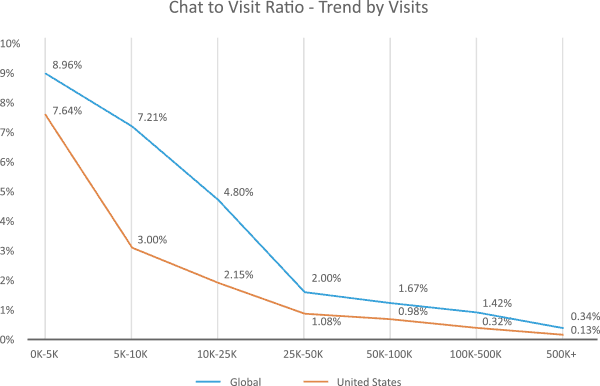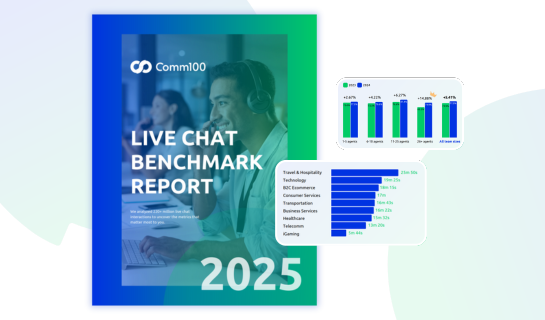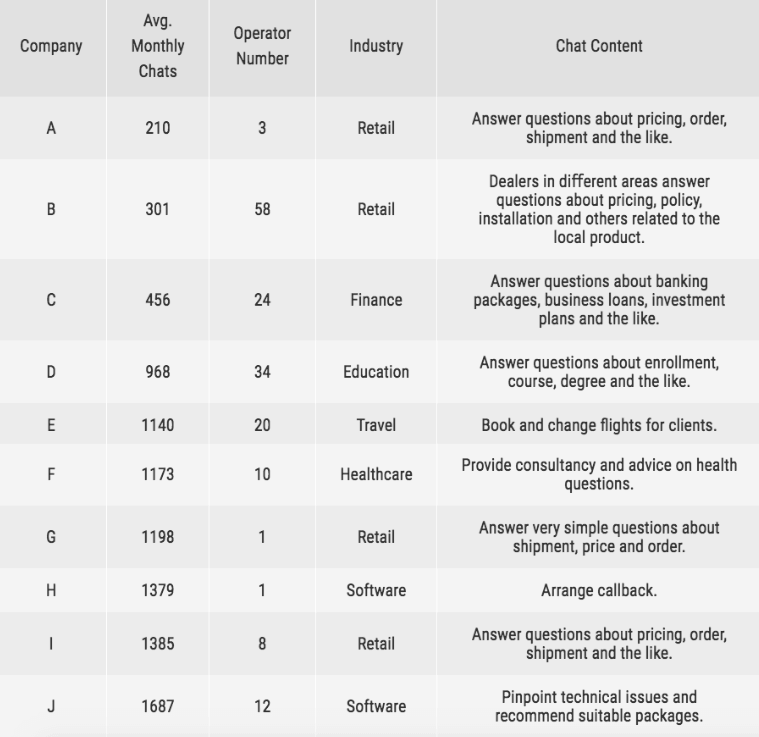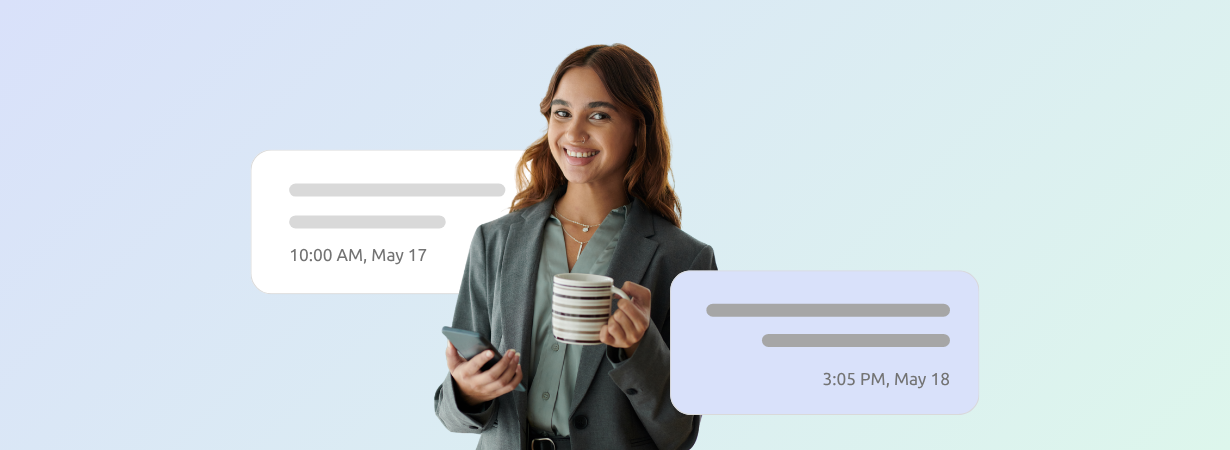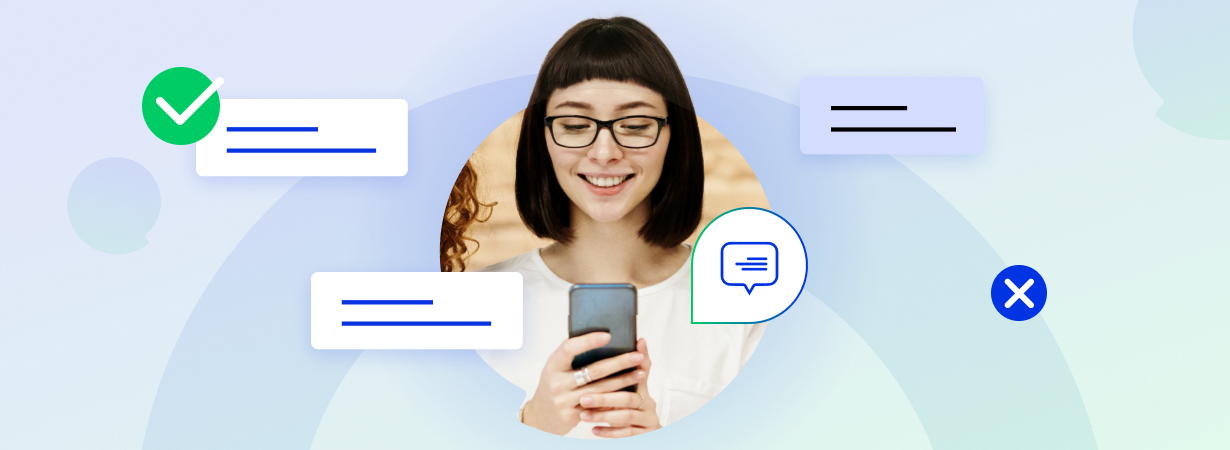After you have defined your live chat objectives, it is time to consider the next step: beginning to implement your live chat software. In order to do this, it is important that you hire live chat agents who are professional and all about ensuring customer satisfaction. But exactly how many live chat agents do you need to hire to provide the happily-ever-after customer service that you dream of?
Three great ways to figure the answer out:
- Book a demo with one of our live chat specialists to discuss your setup
- Input your details into our Live Chat ROI Calculator to find out the optimal setup
- Continue reading this blog!
Just like how every live chat agent is different, every company’s needs will be different. We have laid out several factors for you to consider when planning your live chat and deciding how many live chat agents your company should hire. By asking yourself the questions that we cover in this post, your company will be able to find the number of live chat agents that fits.
How Many Visitors do you Receive Daily?
The first thing to take a look at when deciding how many live chat agents you need is how many visitors you receive to your website daily. A company who receives 50,000 visitors per day may need more live chat agents than a company who receives 5,000 visitors per day. Although the visitor count doesn’t tell us everything we need to know about how many live chat agents we will need, it is a good place to begin formulating our estimate. According to Comm100’s Chat-to-Visit Ratio Report, the chat-to-visit ratio moves inversely to the visit volume a website receives, from 8.96% for the 0-5K segment down to 0.34% for the 500K+ segment.
Based on the global sample, a business with 5,000 visitors might have 448 live chats per month, and a business with 50,000 visitors might have 1000 live chats per month. Until you implement your own live chat software, these metrics can be used as a basic guideline of how many live chats you may experience.
By reviewing your website’s visit count before hiring, you can begin to construct your estimate of how many live chat agents you will need.
Live Chat Benchmark Report 2025
Discover the latest live chat benchmark data to understand how well your team is performing compared to the competition and where it needs to improve.
Download the report
Report
How Many Hours is your Live Chat Available per Day?
With your visitor count and your rough live chat estimate in mind, consider what your operating hours will be. A company who offers 24-hour live chat support may need to hire more live chat agents than a company that only operates live chat from 9:00AM to 5:00PM.
Depending on your live chat needs, we recommend that most companies new to live chat initially stick to set operating hours, such as from 9:00AM to 5:00PM. This will help keep you from overstaffing, and will help keep your live chats to a manageable level while you train agents.
By enabling offline chat, your live chat agents will be able to address any missed chats the next workday. This information will also help you gauge the demand for 24-hour live chat availability and decide if longer chat hours are ideal for your business.
What do you Want to Accomplish with Live Chat?
Do you remember your live chat objectives? Here is where your objectives become important as far as making decisions about staffing.
If you are using live chat reactively in response to customer inquiries and concerns, then your company may need less live chat representation than if you are sending out proactive chat requests to your customers to generate leads. This is because the use of proactive chat is likely to generate a higher volume of chats for your agents to take care of.
However, what is true for one business may not be true for another. Some companies may have a low acceptance rate for proactive chat requests and may need less live chat agents than support teams that have a large inquiry volume even without proactive chat invitations.
To better understand the diverse nature of live chat objectives and how they might influence the amount of live chat agents employed, let’s reference the following table from Comm100’s Chat-to-Visit Report:
These findings show that for different companies, even in the same industry, the number of live chat agents needed to serve similar amount of chats varies greatly. Let’s look, for example, at companies A and B. Three live chat agents for Company A appears to be a normal amount based on their monthly chat volume (210 chats per month). Company B, on the other hand, handles a similar amount of live chats (301 chats per month), but between 58 live chat agents.
So why the enormous difference in support team size? The answer lies with Company B’s live chat objective.
Company B has 58 dealers all over the country, each of which has a single designated live chat agent. When visitors initiate a live chat session, they are routed to the agent who is responsible for their region based on their zip code, which they are asked to disclose in the pre-chat survey. Because the company’s objective is to provide personalized customer service based on each visitor’s region, each dealer has its designated live chat channel implemented, regardless of whether there is a high chat volume or not.
When looking to hire live chat agents, make sure to keep in mind what you wish to accomplish with live chat, and make a decision that will best fit your company’s unique needs.
Does your Support Team Only Work on Live Chat?
Another thing to consider when deciding how many live chat agents you need is whether your support team will work exclusively with live chat, or if they will also be answering phone calls and emails. Per Comm100’s Chat-to-Visit Report, the average number of live chat agents that a company needs to serve 2272 chats per month is 6.
However, if your live chat agents are also busy answering the phone and responding to emails, the amount of chats that each agent will be able to handle per month will be diminished.
To decide whether you want to have a separate support team dedicated to live chat, you can analyze factors such as chat volume, agent performance (especially when handling emails, chats, and phone calls), and whether your agents are spending too much time idle. Once you have hired or assigned your live chat agents, you can access these metrics under your agent performance report.
What Is your Chat Agent Level and Ability?
What level your agents perform at is a big factor in how many live chat agents you might need. If you have a team of seasoned live chat agents, chances are they will be able to tackle more chats at a time and at a steadier pace than if you have a team composed of mostly newcomers.
So how many chats should each agent take on at once? The industry benchmark is 2 live chats per agent at a time, but experienced agents can take on up to 3. In order to keep customer satisfaction levels high and avoid response delays, we would not recommend an agent take on more than 3 active live chats at a time.
You can make sure that your live chat agents are getting the right amount of simultaneous chats by setting a maximum concurrent chat limit for when chats are set to be automatically accepted. You can opt to give different agents different limits or give every agent the same maximum amount of live chats. For example, you can automatically give Agent A (an extremely experienced agent) up to three chats at a time and give Agent B (an agent who is just beginning training) one live chat at a time.
This helps you tailor to each agent’s skill level and can be useful for training purposes. It can also be useful to limit live chat intake if your customer support team responds to phone calls and emails at the same time as live chat.
How is your Agents’ Workload?
Do your live chat agents seem swamped? Then you might be short-staffed. According to Comm100’s Benchmark Report, over the course of this past year, agents’ live chat count increased an average of 33%, equating to 714 chats per agent per month. This means that live chat agents are handling more chats than ever before.
Agents taking care of a high number of chats per month is not a problem, unless it impacts on the quality of customer care. Unfortunately, the more chats a live chat agent deals with, the lower customer service will be on average.
Since agent workload fluctuates year-round, we recommend that your company consider hiring part-time seasonal workers for the holidays. We also suggest that your company provide consistent and effective training to accommodate the ever-growing demand for live chat.
How Long are your Agents Spending on Each Chat?
To prevent idleness, it is important to provide your agents with a guideline of how quickly they should strive to solve live chats. However, it is also important to make sure that your customers’ inquiries and issues are being taken care of the first time, or in one live chat sitting.
A customer who leaves a chat session with an unresolved issue may speak badly about your company to friends, family, and across social media. They may also be forced to contact the company again, which in the end results in a greater agent workload and more time spent on the customer’s issue. At the same time, a visitor whose doubt is left unresolved after their first time contacting your company may never convert into a paying customer. Therefore, it is important that your business prioritize first-contact resolution above the need for speed.
How long you would like your live chat agents to spend on each chat is up to you. In Comm100’s Live Chat Benchmark Report, we found that last year’s average chat duration was 11 minutes and 9 seconds – up 2% from the year before. To keep your live chat time down, we recommend that you make use of new software advances, such as canned message shortcuts, to reduce overall chat duration and speed up time customers spend on chats. For more tips, read our blog post: How to Reduce Your Average Handle Time Fast.
Do you Need to Make any Staffing Adjustments?
Just because you have assembled your dream live chat team does not mean that your work is over. Too many idle agents, budget cuts, seasonal traffic changes, and a growing demand for live chat are all reasons you might have to rethink the amount of agents that you need.
There are many ways in which you can gage the need for staffing cuts, increases, or adjustments. You can view agent availability, workload, and efficiency with the Live Chat Reporting System and use this tool to adjust staffing and shifts where necessary.
Another metric that you can use to see how your staffing plan is doing is customer satisfaction levels. Allowing customers to rate agents’ performance with the post-chat survey will help you determine how satisfied your customers are with their service. A high customer satisfaction level may be an indicator that your live chat experience is functioning smoothly, and that you are doing well as far as the amount and quality of the agents that are working for you. On the other hand, a low customer satisfaction rating may be an indicator that you need to make staffing adjustments. Whether this means adding more live chat agents to help ease agent workload or providing agents with additional training, there is always something that can be done.
Conclusion
By planning ahead and making adjustments over time, you will be able to make sure that you have the right number of live chat agents on your team. The good news is that no matter what happens or how much your live chat volume increases with the years, changes can always be made accordingly. We hope that this guide helps you hire live chat agents and moves you one step closer towards successful live chat implementation.
Live Chat Benchmark Report 2025
Discover the latest live chat benchmark data to understand how well your team is performing compared to the competition and where it needs to improve.
Download the report
Report
Note: This blog post was originally published in November 2017. Because it is one of our most popular posts, we have updated it to include the latest research, up-to-date statistics and best practices in this topic.


